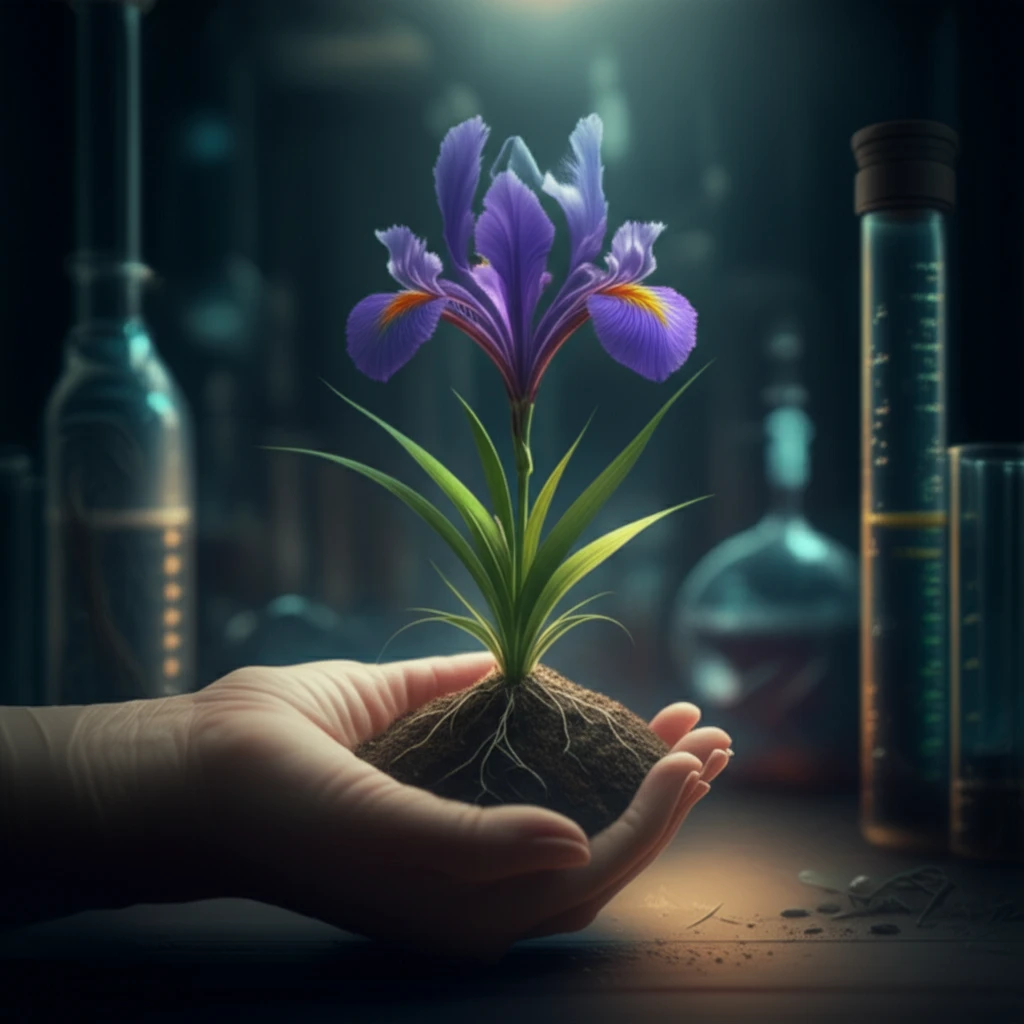
Unlocking the Secrets of Iris Propagation: A Step-by-Step Guide
"Discover how to efficiently propagate Iris sanguinea using innovative in vitro techniques, ensuring a vibrant garden every season."
Irises, with their striking colors and unique forms, are a favorite among gardeners and nature enthusiasts alike. While traditionally propagated through seeds or bulbs, these methods often present limitations. The conventional method challenges are due to seed dormancy and low germination rates and slow growth of bulb divisions. The propagation of irises is key to ensuring the sustainability and availability of these beautiful plants, especially in the face of environmental challenges and habitat loss.
A recent study published in Scientific Reports details an innovative approach to Iris sanguinea propagation, focusing on overcoming seed dormancy and optimizing in vitro regeneration. This research opens new possibilities for large-scale iris cultivation and conservation, providing a practical and efficient alternative to traditional methods.
This guide breaks down the study's findings, offering a step-by-step approach to propagating Iris sanguinea from seeds using in vitro techniques. Whether you're an experienced gardener or just starting, you'll discover how to unlock the secrets of iris propagation and cultivate these stunning flowers with greater success.
Seed Sterilization and Germination: Laying the Foundation

The first and most critical step in in vitro propagation is ensuring that the seeds are free from contamination. The Scientific Reports study emphasized the importance of optimized sterilization, stratification, and scarification methods to address the physiological dormancy inherent in iris seeds. Here’s how to get started:
- Hot Water Treatment: Soak seeds in water initially heated to 80°C (176°F) overnight. This helps to break down the seed's natural defenses against germination.
- Surface Sterilization: After the hot water soak, sterilize the seeds using a two-step process. First, use 75% ethanol for 30 seconds, followed by a 20-minute soak in a 4% sodium hypochlorite (NaOCl) solution. This ensures any surface contaminants are eliminated, providing a clean start for germination.
- Seed Coat Removal: Carefully remove the seed coat using a sterile scalpel to encourage germination.
Transplanting and Acclimatization: Setting the Stage for Success
Successfully propagating Iris sanguinea using in vitro techniques requires attention to detail and a commitment to creating the optimal conditions for each stage of development. By following the methods outlined in this guide, inspired by the Scientific Reports study, you can unlock the secrets of iris propagation and cultivate these stunning flowers with confidence.
